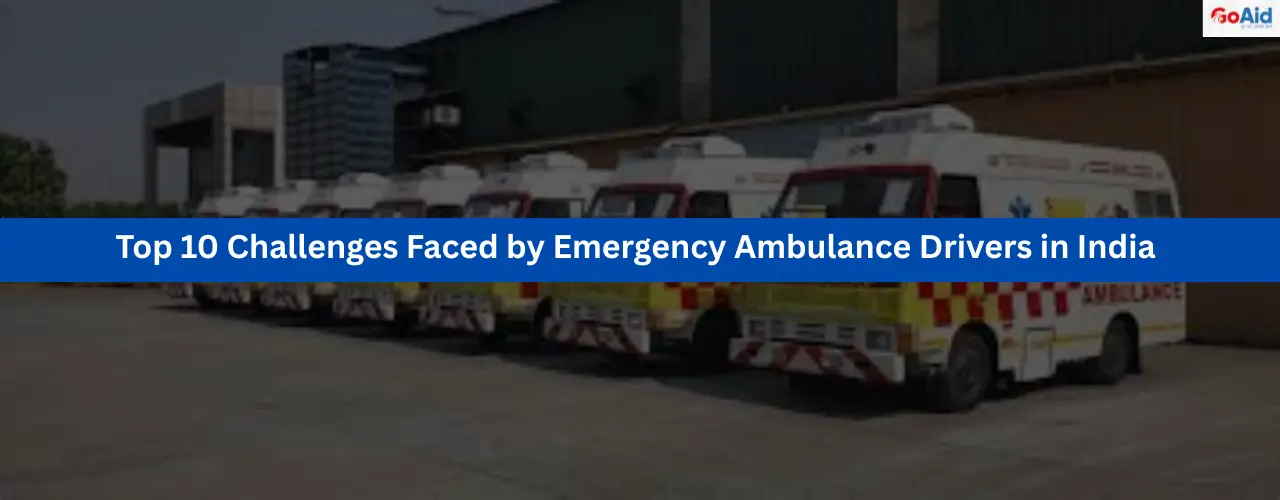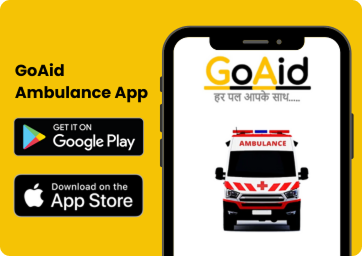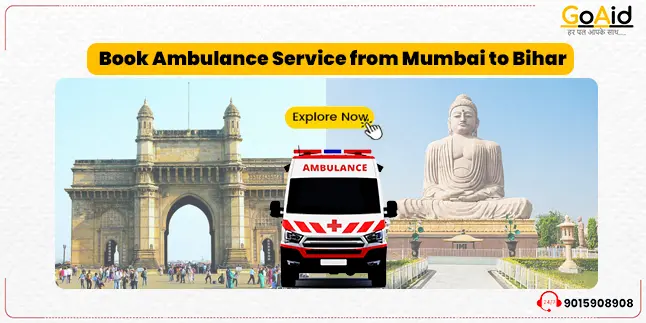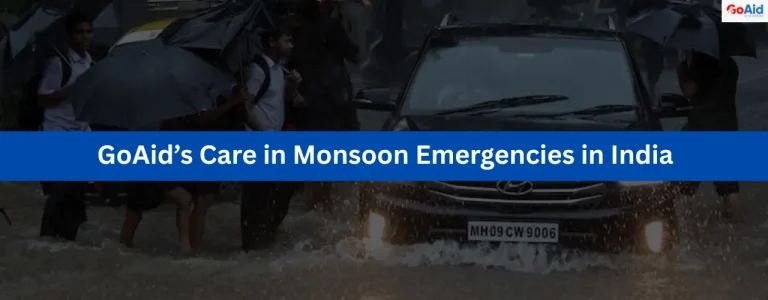In India, Ambulance drivers play a crucial role in patient transfer services, but their job is filled with many challenges. From poor road conditions to aggressive traffic behavior and lack of proper training, the challenges they face are serious and life-impacting. Despite being the first responders, their struggles are often overlooked.
In this blog. We are providing you with the information about what ambulance drivers do. Also, the major challenges they face during medical transportation and their solutions. Are you interested in reading about it? If yes, then why wait?
LetŌĆÖs start reading
What Does an Ambulance Driver Do in India?
Ambulance drivers in India are responsible for safely navigating ambulances through unpredictable traffic, often under immense time pressure. Their duty includes not only reaching the patient on time but also ensuring swift and safe transport to hospitals. They play a crucial role in emergencies, including accidents, cardiac arrests, and trauma cases.
Apart from driving, they support medical staff during patient transfer service, coordinate with hospitals, and manage critical care situations while on the road. The duties of ambulance drivers in India demand quick thinking, focus, and resilience. Given the shortage of trained staff, many drivers work extended hours under high stress, facing daily risks from road rage, bad weather, and poor infrastructure.
Where Do These Challenges Begin? Inside IndiaŌĆÖs Emergency Response System
The challenges faced by ambulance drivers in India often begin within the emergency response system itself. Issues such as delayed dispatch coordination, poor ambulance driver training, and unmonitored traffic systems create operational chaos. A lack of centralized routing and communication tools worsens ambulance navigation and response time.
Furthermore, Indian road conditions and unplanned urban infrastructure contribute to frequent hurdles in patient transfer. Inconsistent emergency lane policies, ambulance staff shortage, and lack of awareness among road users aggravate ambulance driving hazards. These internal system failures not only delay patient care but also compromise the safety and efficiency of ambulance services in India.
Major Challenges Faced by Ambulance Drivers in India
Ambulance drivers across India face real-time challenges daily that impact both patient outcomes and their safety.
1. Poor Indian Road Conditions
Ambulance drivers face problems such as broken roads, potholes, and congested lanes that severely hinder ambulance navigation. Emergency drivers must steer through dangerous terrain, which risks delays and jeopardizes patient stability during critical transport.
2. Unpredictable Traffic and No Emergency Lanes
Ambulances in traffic struggle due to the absence of emergency corridors. Most drivers do not yield space, forcing ambulance drivers to navigate risky gaps and slow-moving roads.
3. Road Rage Against Ambulance Drivers
Many ambulance drivers in India report verbal abuse or aggressive behavior from other drivers. These incidents lead to stress and delays during urgent medical transfers.
4. Inadequate Ambulance Driver Training
Many drivers lack specialized training in handling emergency vehicles or patients. This skill gap affects decision-making during high-pressure situations, risking both driver and patient safety.
5. Ambulance Staff Shortage
Another challenge is the shortage of trained support staff, which places extra responsibilities on the driver. They often help load patients, manage calls, and coordinate with hospitalsŌĆöall while driving under time pressure.
6. Mental and Physical Exhaustion
Long, unpredictable shifts and emotionally taxing situations contribute to driver burnout. Fatigue leads to errors and slower response times, making ambulance driving a hazardous job.
7. Faulty Equipment and Vehicle Breakdown
Ambulance drivers often work with poorly maintained vehicles or malfunctioning equipment. This can result in dangerous breakdowns or failure of life-saving tools en route.
Solutions to Improve Ambulance Services and Support Drivers
To overcome the critical challenges faced by ambulance drivers in India, systemic and practical improvements are necessary. Here are key solutions to enhance patient transfer service and support emergency ambulance drivers on the road:
1. Advanced Ambulance Driver Training Programs
Introduce nationwide ambulance driver training with emergency navigation, patient handling, and stress management. Skilled drivers ensure safe and swift response, especially in high-pressure environments.
2. Dedicated Emergency Lanes in Traffic Systems
It is very crucial to designate and enforce dedicated lanes for ambulances in major cities. This ensures ambulance traffic flows freely, reducing delays during life-threatening emergencies.
3. Public Awareness Campaigns
It is very important to educate citizens about yielding to ambulances, reducing road rage against ambulance drivers. Respect and cooperation from the public ensure faster and safer patient transfers.
4. Better Ambulance Fleet Maintenance
There is a need to ensure regular vehicle checks and equipment updates. Avoiding breakdowns and ensuring functional medical tools support drivers during critical patient transport situations.
5. Hiring More Ambulance Staff
Address the ambulance staff shortage by recruiting trained professionals. This allows drivers to focus solely on driving while support staff manages patient care and coordination.
6. Use of Smart GPS and Live Navigation
Equipping ambulances with real-time GPS helps overcome poor Indian road conditions. Smart ambulance navigation tools can automatically suggest the fastest, least congested routes.
7. Implementing Driver Wellness Programs
Support ambulance drivers with counseling and rest shifts. Mental and physical wellness improves focus and decision-making during emergency services in India.
The GoAid Difference: How Our Drivers Are Trained to Tackle Challenges
At GoAid, we understand the real hurdles in patient transfer. Our team goes beyond basic training to empower ambulance drivers in India with advanced tools, skills, and resilience to handle emergencies effectively.
1. Rigorous Ambulance Driver Training
GoAid drivers undergo certified ambulance driver training programs, including emergency response, ethical conduct, and patient care to ensure all-around readiness.
2. Real-Time Navigation Technology
We equip every GoAid ambulance with smart GPS systems to tackle Indian road conditions and avoid delays caused by traffic or blockages.
3. 24/7 Emergency Dispatch Coordination
Our command center ensures real-time coordination and quick dispatch to reduce wait time, allowing our ambulance drivers to focus only on safe driving.
4. Psychological Resilience Workshops
We prepare our drivers for emotional pressures with stress management and wellness sessions, minimizing ambulance driving hazards and mental fatigue.
5. Strict Vehicle Maintenance Protocols
Every GoAid ambulance is maintained through a strict routine. We prevent vehicle breakdowns and ensure all equipment is ready for patient emergencies.
6. Team-Based Patient Transfer Service
GoAid reduces driver burden by assigning trained paramedics and staff to every ambulance. This helps manage patient care while the driver focuses on the road.
7. Community Awareness through GoAid Campaigns
We actively promote public awareness campaigns to reduce road rage against ambulances and help clear the path for emergency services in India.
Government and Policy Gaps That Need Urgent Attention
Despite the rising demand for efficient emergency ambulance services in India, there remains a significant lack of uniform policy. Many states follow outdated or fragmented ambulance service guidelines, leaving gaps in ambulance driver training, fleet standards, and emergency medical protocols. The absence of a centralized framework hampers the overall patient transfer service quality.
Moreover, ambulance drivers in India often face legal and procedural delays during emergencies. There is limited legal protection against road rage incidents or assault. Government negligence in updating emergency road rules, traffic law enforcement, and driver welfare programs further weakens the system. Stronger laws, policy reforms, and centralized ambulance regulations are urgently needed to support ambulance staff and improve emergency response nationwide.
Conclusion to the Top Challenges Faced by Emergency Ambulance Drivers in India
Emergency ambulance drivers in India operate under immense pressure, navigating poor road conditions, traffic, and public apathy. To ensure efficient patient transfer service, we must address their challenges through better training, public awareness, and stronger government support. GoAid continues to lead by example with modern solutions and dedicated driver welfare systems.
FAQs related to the top Challenges Faced by Emergency Ambulance Drivers in India
Question 1: What are the major challenges faced by ambulance drivers in India?
Answer: Ambulance drivers in India face traffic congestion, poor road conditions, aggressive drivers, a lack of training, and delays during patient transfer services.
Question 2: How do poor Indian road conditions affect ambulance driving?
Answer: Indian road conditions with potholes and unplanned routes slow down emergency response, causing discomfort to patients and risks to ambulance navigation.
Question 3: Why is ambulance driver training important in India?
Answer: Proper ambulance driver training ensures safe driving, better emergency handling, and improves the overall patient transfer service during critical situations.
Question 4: What is road rage against ambulances, and how does it impact drivers?
Answer: Road rage against ambulances includes blocking, verbal abuse, or aggressive driving by others, which delays response and puts both drivers and patients at risk.
Question 5: Is ambulance staff shortage a serious issue in India?
Answer: Yes, ambulance staff shortage in India leads to overworked drivers, delayed emergency responses, and poor quality in ambulance services.
Question 6: How does traffic affect ambulance response time in India?
Answer: Heavy traffic and a lack of emergency lanes in India delay ambulances, affecting timely medical care and increasing challenges for ambulance drivers.
Question 7: What are the duties of ambulance drivers in India?
Answer: Ambulance drivers in India transport patients, navigate routes quickly, handle emergencies, and ensure safety during patient transfer services.
Question-8: How can we better support ambulance drivers in India?
Answer: By improving driver training, offering mental health support, enforcing traffic laws, and creating public awareness about giving way to ambulances.
Question-9: What is GoAid doing to help its ambulance drivers tackle challenges?
Answer: GoAid provides advanced training, GPS-enabled navigation, safety protocols, and round-the-clock support for its ambulance drivers across India.
Question-10: Are there any government policies addressing ambulance driver issues in India?
Answer: Government efforts exist, but policy gaps remain. Stronger regulations are needed for driver safety, better road infrastructure, and uniform emergency protocols.
















